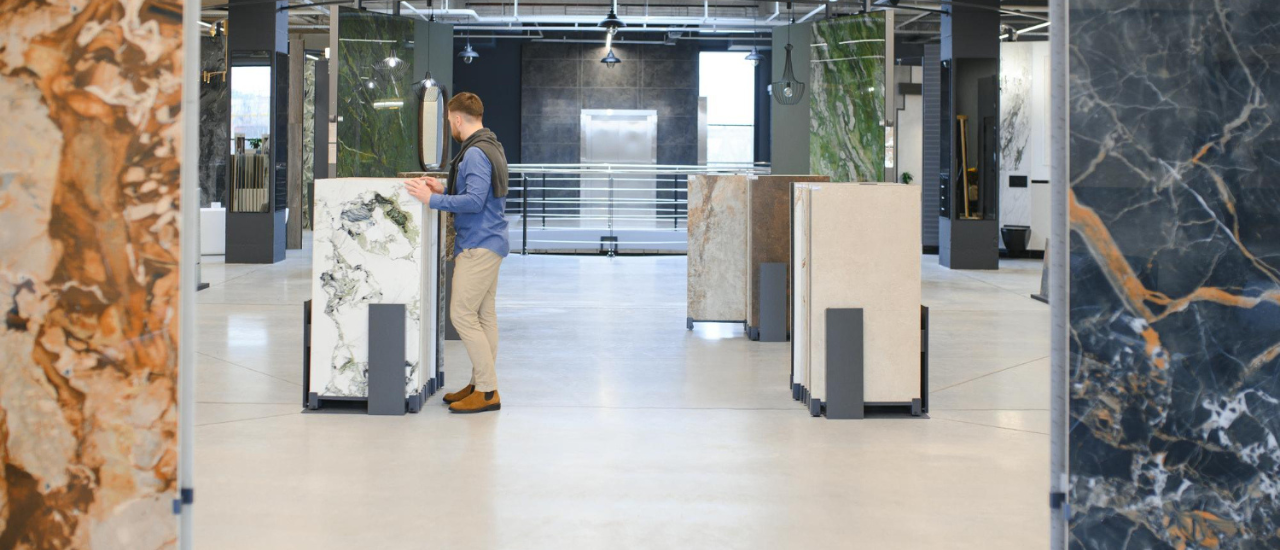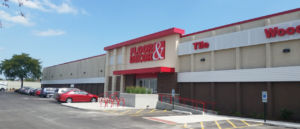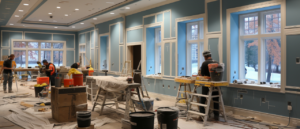Tiles are more than just a decoration for your space; they are a design feature that can transform a space, providing an element that not only lasts long but also improves the aesthetics. However, the success of a Tile Installation Services in Chicago depends not just on the selection of the right tile but also on the installation method, particularly considering the city’s climate.
The Importance of Professional Tile Installation in Chicago
Chicago’s climate is known for its extremes. Hot, humid summers and severely cold winters. This rapidly changing weather can impact the longevity of tile installations, causing natural war over time. Therefore, choosing methods and materials that can withstand these challenges is essential when planning a tile installation project. Professional tile installation services in Chicago ensure that the chosen methods and high-quality materials are applied correctly, guaranteeing a long-lasting and beautiful finish.
The Need for Tile Work
Tile work is beneficial for several reasons. First, it beautifies a space and adds value to the property. Second, tiles provide a durable and easy-to-maintain surface, ideal for both residential and commercial settings. With the right installation method, tiles can improve a building’s energy efficiency, providing insulation that keeps your interior space cooler in the summer and warmer in the winter.
Given these benefits, it’s clear that investing in professional tile installation is not just good for the looks; it’s about functionality, durability, and long-term cost savings. With that in mind, let’s explore the various tile installation methods and determine which is best suited for Chicago’s climate.
Tile Installation Methods
1. Thinset Method
The thinset method is one of the most common tile installation techniques. In this method, a notched trowel is used to apply the material onto the substrate. The tiles are then pressed into the mortar and adjusted to attain a level surface.
Advantages:
Versatility: Thinset mortar is versatile and suitable for different tile types, such as ceramic, porcelain, and natural stone.
Strong Adhesion: Thinset ensures tiles stick well to the surface, so they’re less likely to come loose or pop off.
Water Resistance: Thinset mortar is highly resistant to moisture, making it suitable for areas that experience high humidity or occasional water exposure.
The thinset method is best for indoor installations where consistent temperatures and humidity can be maintained. For outdoor applications, it’s crucial to use a modified thinset that can withstand freezing winter cycles.
2. Mud Bed Method
The mud bed method, or the mortar bed method, involves creating a thick layer of mortar on the substrate. The tiles are then set into the mortar bed, allowing for greater flexibility in terms of leveling and slope.
Advantages:
Customizable Slope: The mud bed method allows for control over the slope, making it perfect for areas where drainage is a concern, such as showers or patios.
Superior Strength: This method provides a durable base for tile installations, capable of withstanding heavy traffic and significant temperature changes.
The mud bed method is well-suited for both indoor and outdoor installations in Chicago.Its strength and flexibility make it a great choice for places that face winter weather and heavy usage. However, skilled professionals are needed for proper installation to avoid problems like cracking or uneven surfaces.
3. Large Format Tile Method
As large format tiles become more popular, new installation methods have been developed to handle the challenges that they come with. These methods often involve using a leveling system to ensure a flat surface and a specialized thinset to provide support.
Advantages:
Modern Aesthetics: Large format tiles offer a contemporary look, which is perfect for modern design styles.
Fewer Grout Lines: Larger tiles have fewer grout lines, reducing maintenance and providing a smoother appearance.
The large format tile method is suitable for both residential and commercial spaces in Chicago, particularly those with modern design aesthetics. However, due to the potential for expansion and contraction caused by temperature fluctuations, it’s important to use a high-quality, flexible thinset mortar.
The success of a tile installation project depends on selecting the right method based on the specific needs of the space and the demands of the local climate. The thinset method offers versatility and moisture resistance, making it a reliable choice for indoor installations. The mud bed method provides superior strength and flexibility, and it is ideal for both indoor and outdoor applications that face heavy use and extreme weather conditions, while the large format tile method is best for modern designs and requires careful installation to ensure durability.
Ultimately, working with professional tile installation services is essential to ensure that the method you choose is implemented correctly and that the tiles last and maintain their charm for a long time. By considering the challenges of Chicago’s climate, businesses and homeowners can make informed decisions that improve the beauty, functionality, and value of their properties. For further inquiries and support, you can talk to our tile specialists today by calling (312) 687-8707 or sending your queries to Contact@lmdecorating.com. We also offer expert staining services in Chicago for all residential, commercial, and industrial projects.




